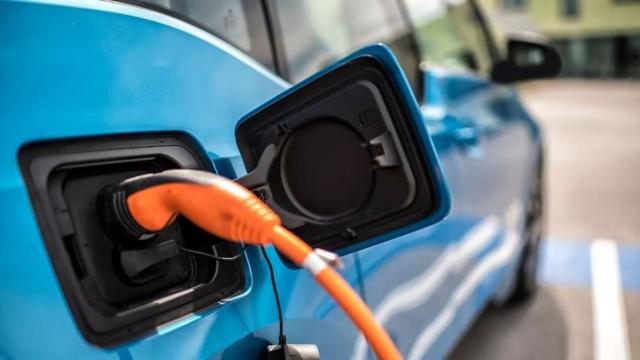Australian website CarsGuide has released a comprehensive report on electric vehicle ownership in Australia, including price differences between states and what factors are driving electric vehicle uptake.
The “EVGuide Report 2022” comes at an interesting time: petrol prices have gone up internationally over the past month, which many have linked to an increase in electric car demand.
“It is paramount that Australians are aware and understand all of the factors, new and similar to petrol cars, that need to be considered when choosing an EV or a hybrid. Our goal with the EVGuide is to create a clear and standardised source of information and encourage more seamless and well-informed consideration and purchasing experiences for consumers across Australia,” says Tom White, the new energy vehicle specialist at CarsGuide.
“The EV landscape in Australia is not as straightforward as it is when buying a petrol car.”
Earlier this year, the Tesla Model 3 was revealed as one of the most popular sedans of 2021. Electric vehicle market share (for newly purchased vehicles) jumped from about 0.78 per cent in 2020 to 1.95 per cent in 2021, according to the Electric Vehicle Council.
Now, combining research from a wide range of sources, the CarsGuide report makes a great resource if you’re interested in the current electric vehicle landscape in Australia.
Cost is the biggest factor
Using data from an earlier report by the Electric Vehicle Council, CarsGuide says that Australians are most concerned about the price of electric vehicles, with an unsurprising 87 per cent of respondents saying that price is the biggest purchasing barrier.
The report outlines that 50 per cent of Australians would consider making their next vehicle an electric one (in line with the Electric Vehicle Council), however, hybrid and standard petrol-motor vehicles remain an option.
“Many new-to-the-market consumers, start their new car buying journey considering a pure EV, but end up settling for a hybrid or conventional model when signing on the dotted line,” CarsGuide says.
This makes sense, considering a cheap electric vehicle isn’t anywhere near the same price as a cheap petrol vehicle (for example, the popular Mazda 3 starts at $26,340, whereas the cheapest electric car, the MG ES EV, starts at $44,990).
The report further outlines that many buyers are waiting for the “right model” to arrive in Australia, specifically noting the BYD Atto 3 (arriving later this year), the Volkswagen ID.3 and the Tesla Model Y.
EVs are the most expensive in Western Australia
Using an example car (a made-up all-electric small-SUV costing $50,000, which is a pretty low price for an EV at the moment), CarsGuide has calculated the cost of an electric car across Australian states and territories with incentives factored in. This price slips under the luxury car tax.
Here’s how much you’d spend on a $50,000 electric SUV in every state and territory, according to the 2022 EVGuide Report:
- Western Australia: $53,250
- South Australia: $51,940
- Northern Territory, Tasmania and ACT: $50,000
- Victoria: $49,100
- Queensland: $48,000
- New South Wales: $47,000
The last three states each offer electric vehicle incentives, with some states and territories offering stamp duty exemptions. If you’d like to see a breakdown of electric vehicle incentives in every state and territory, we’ve got one here. Keep in mind that EV rebates (in the states that offer them) aren’t available after a price threshold set by the state.
Additionally, the report notes that it’s cheaper to run and charge an EV than it is to run a petrol-engined vehicle, but we’ve known this for a while.
Charging up
While New South Wales appears to be to cheapest state to buy an EV in (with incentives factored in) it also appears to be the most proactive when it comes to charging infrastructure.
Using data from ChargeFox, JetCharge, Tesla, Jolt, Evie and NRMA, which provide public charging stations across Australia, CarsGuide crunched the numbers on public chargers in every state and territory.
Of the states and territories, here’s how many chargers are available (1093 in total across the country):
- New South Wales: 619 (523 AC, 96 DC)
- Victoria: 439 (408 AC, 31 DC)
- Queensland: 348 (333 AC, 15 DC)
- Western Australia: 194 (189 AC, 5 DC)
- South Australia: 172 (143 AC, 29 DC)
- Tasmania: 72 (64 AC, 8 DC)
- ACT: 17 (16 AC, 1 DC)
- Northern Territory 7 (all AC)
Note that AC chargers are less powerful, while DC chargers are usually quicker, however are more difficult to roll out. The NSW government announced a commitment to rolling out ultra-fast chargers earlier this year.
Additionally, the report shed light on range anxiety, noting that Australians only drive 38km a day on average (using data from the Australian Bureau of Statistics).
Comparative to electric vehicle ranges, which the report also highlighted, the Tesla Model S is reportedly the longest-range electric vehicle available in Australia, with a massive claimed range of 837km. This is followed by the Tesla Model 3 (657km) and the BMW iX (630km). According to an earlier report, EVs could have range parity with petrol vehicles in two years.
With EV ownership increasing across Australia, it’s great that a resource like this exists.
If you’d like to read the EVGuide Report 2022, you can do so here.
